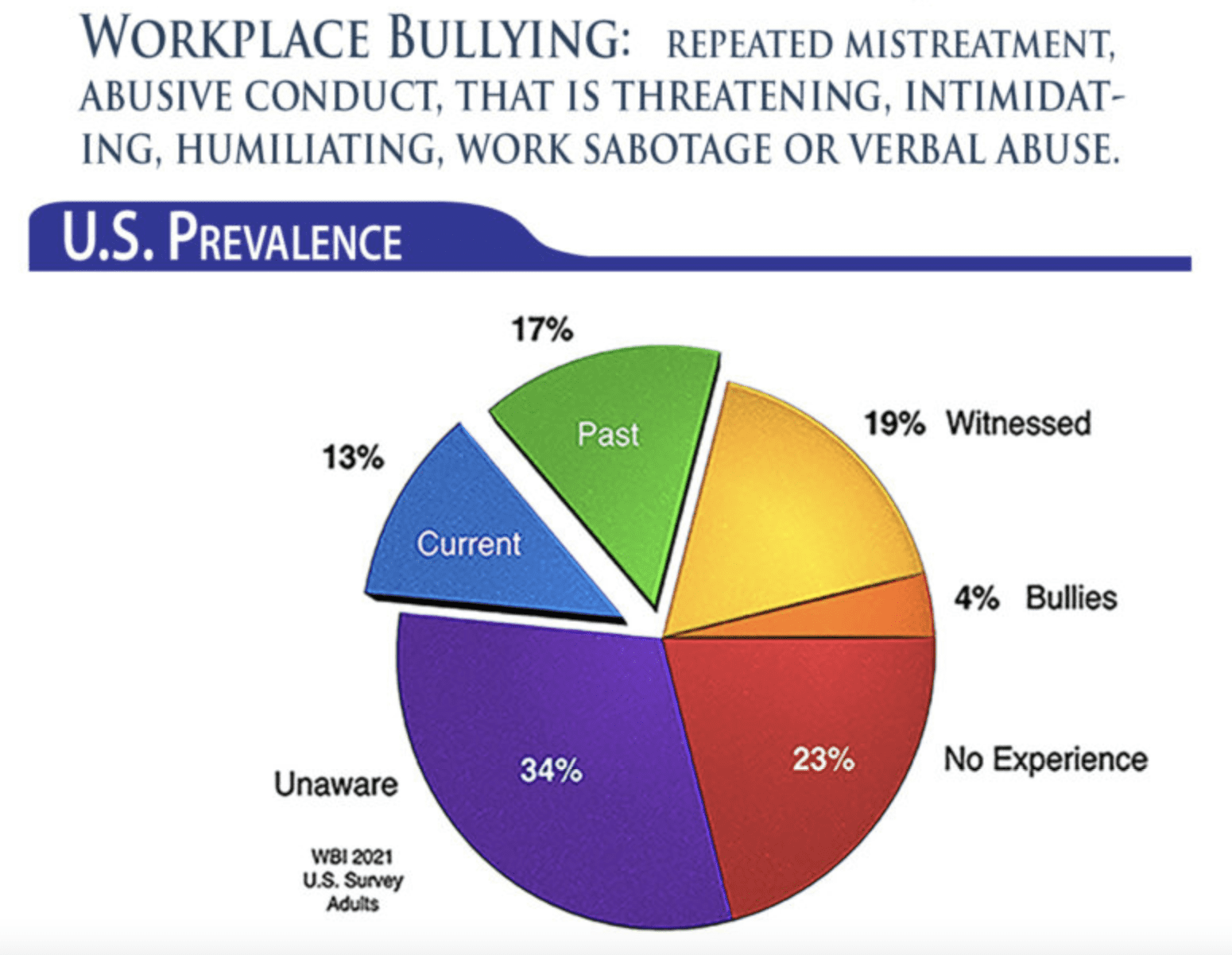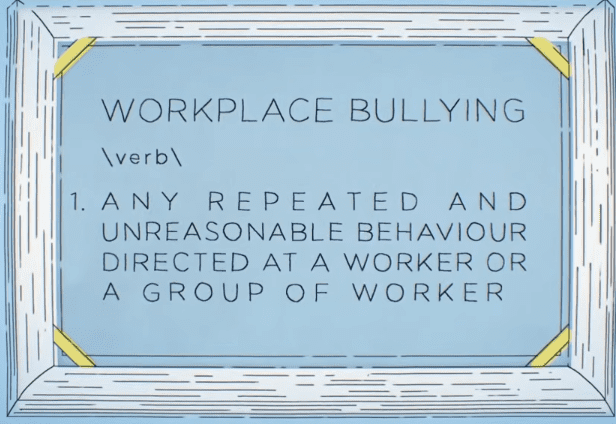Bullying is often discussed in connection with school or the Internet (cyberbullying). Bullying in the workplace should not be neglected either.
After all, surveys show that almost one in three people has already been a victim of workplace bullying, and 25% had been involved in bullying either as bystander or bully. These remarkable numbers underscore the importance of taking a closer look at bullying in the workplace. Let’s see what it’s all about.
What Is Bullying?
Bullying is a form of psychological violence delivered through open or covert behavior. Plus, the behavior is systematic, exhibited repeatedly, and interferes with a person’s working performance – either directly or indirectly. Bullying can be carried out by colleagues, superiors (so-called bossing), or by employees on behalf of the superior, which means bullying is a group phenomenon with several people involved. Primarily perpetrator and victim, plus third parties who directly support or silently approve bullying by ignoring it.
What Are Examples Of Workplace Bullying?
One can harass a person through various directly observable or concealed activities. Relevant actions can be:
- Disparaging or demeaning remarks such as ‘Obviously you didn’t make it.’
- Openly expressed insults, verbal abuse, or threats,
- Repeated assignment of inappropriate tasks, e.g., the manager assigns more and more jobs to an employee until she is completely overwhelmed,
- Rude or hurtful non-verbal gestures such as eye-rolling, giggling, staring,
- Direct sabotage of work performance, e.g., the bully deletes data in the computer so that the targeted person cannot meet the deadline for a report,
- Spreading rumors or gossip about the bullied person,
- Forwarding or sharing private messages or information without permission in order to embarrass the targeted person, for example, a coworker shares that the bullied person’s husband cheated her. However, she confessed this in a confidential conversation.
- Constantly interrupting the bullying victim to unsettle the person,
- Excluding the targeted person from meetings or other activities that are important for completing work tasks,
- Avoiding or remaining silent around the affected person, so she feels socially isolated and excluded.
These behaviors focus on one goal: to hurt the person and harm them more or less. But what makes people do it?
What Are The Causes Of Workplace Bullying?
Bullying can always occur when people are in a confined space. In the workplace, they are interdependent and often share scarce resources. Because only one can get the desired promotion, that can cause rivalry, competitive thinking, even hostility, and exclusion.
Sometimes the source of bullying lies in the bully’s low self-esteem. The perpetrator belittles another person and puts them down to make themselves look better.
For those affected by the harassment, its reasons often remain unidentifiable. Many become victims through no fault of their own. Often, however, the envy of colleagues for good performance or success also plays a significant role.
Furthermore, sometimes the victim of bullying has an excellent relationship with the boss, so the coworkers fear that information will be passed on ‘upstairs’. In this case, mistrust can be the source of exclusion.
How Do I Know If I'm A Victim Of Bullying?
A pretty significant sign that you’re suffering from bullying is when you already feel exhausted and ill by the start of the workweek. If you are afraid of going to work or feel restless, it can also be a sign of bullying.
If coworkers repeatedly attack and avoid you, or you are no longer enjoying life, i.e., you no longer enjoy activities with family or friends you once loved, you could be affected by bullying.
But it’s not like there’s nothing you can do about the harassment. There are a variety of ways to counteract it.
What Can And Should Organizations Do To Fight Bullying In The Workplace?
The organization can take several actions to ensure that bullying does not occur. In any case, these should come from the organization’s management and should be communicated to everyone: We don’t tolerate bullying in our company. Here are some suggestions:
But those affected are not helpless either. There are some effective strategies to counteract bullying.
What Can I Do If I Am A Victim Of Workplace Bullying Myself?
In order to defend yourself against bullying, I recommend proceeding step by step.
In the beginning, it makes sense not to react to hurtful statements or actions. Hence, the perpetrator’s activities come to nothing, which already might have a de-escalating effect so that the bully gives up.
If that doesn’t happen, then you should take action. First, you talk to the perpetrator privately about his behavior. Afterwards, you can also do this in the presence of others. It is also helpful to keep a bullying diary to record and describe the harassment actions in detail (including date and time).
If the victimization continues, you should ask the perpetrator to change his behavior in writing. Plus, you can emphasize that you will take legal actions (bullying is a criminal offense) and inform your employer accordingly.
As a last resort, speak to your supervisor or management about a transfer or job alternatives. Termination can also be a final option. On the one hand, this implies that the bully was successful – but on the other hand, your health and happiness are the most important thing after all.
Take Away
- Bullying is a form of psychological violence and can be carried out directly or indirectly through various actions.
- The aim of bullying in the workplace is always to harm the bullying victim.
- Anyone can be the target of harassment, but no one has to take it defenselessly. It is important to first deal with the bullying person and seek support.
- Bullying is punishable by law, and companies can take various actions to prevent or combat bullying effectively.
Are you affected by bullying? Please ask for help and get advice on how to proceed effectively. You will find some ideas below. Coaching can also help to deal with the consequences. I would be happy to discuss the possibilities in a first conversation.







